Invisalign in Brazil
Search and Compare the Best Clinics and Doctors at the Lowest Prices for Invisalign in Brazil

Find the best clinics for Invisalign in Brazil
With Medijump you can browse 6 facilities offering Invisalign procedures in Brazil. The cheapest price available is $1,001 in Rio de Janeiro. And for the cheapest price globally, prices start from $45 in Turkey.
Invisalign in Rio de Janeiro
Price: $ 1,001
Invisalign in Araraquara
Price: $ 2,500
Turkey offers the best prices Worldwide
Price: $ 45
ZETA Holding (Dentistry and HealthCare), located in Av Pedro Galeazi, Araraquara, Brazil offers patients Invisalign procedures among its total of 4 available procedures, across 1 different specialties. The cost of a Invisalign procedure ranges from $2,500 to $5,000, whilst the national average price is approximately $2,334. There are many specialists available at the Clinic, with 4 in total, and they are not accredited by any recognized accreditations institutes
Dds Marco Rocha e Carla Simone, located in R Real Grandeza, Rio de Janeiro, Brazil offers patients Invisalign procedures among its total of 7 available procedures, across 1 different specialties. The cost of a Invisalign procedure ranges from $2,000 to $4,000, whilst the national average price is approximately $2,334. There are many specialists available at the Dental, with 4 in total, and they are not accredited by any recognized accreditations institutes
From 17 verified reviews
Rod Brown, 09 September 2020
I encountered Dr. Rowan Vilar because of a recommendation from a trusted friend. And although both the global pandemic and the impact that had on my very local wallet, prevented me from experiencing treatment under his care ... please allow me a moment to express why he would have been my first choice.I’ve been suffering for about a decade with poor dental health, so much so that the dental professionals in the Atlanta area would not perform regular scheduled maintenance cleanings, for fear of a malpractice suit. I don’t have dental insurance and it has taken years for me to save the money needed to address my oral health.I’ve searched several destinations abroad and even though Dr. Vilar’s wasn’t the least expensive, his review of my current health status and plan to restore me to good health was and remains BY Far, the most comprehensive, the easiest to understand, the most thought out, the most focused on both the physical and mental aspects of oral health, the most attuned to my specific satisfaction and the most considerate of my specific circumstances, that stood as a challenge for me, on the road to alleviating my dental pain and improving my oral health.Here’s how.I contacted his office on a weekend and received a return call before the weekend had ended. We shared 2 or 3 conversations at length, regarding my current status. In those conversations we covered everything from the problems I was experiencing, to how I felt about appearance to what had prevented me from addressing the issues until now.After gathering the information, he expressed a need for X-Rays, Pictures and I also had a topographical CD available. I sent it all to him and we scheduled a follow up ZOOM call for a few days later.I am NOT the most tech savvy senior citizen in the world and Dr. Vilar was very patient with and helpful to me as I struggled via WhatsAPP and ZOOM to connect ... but finally, when I did ... it was So Very Worth My While!Dr. Vilar had prepared a presentation using my photos and that of successful projects he’d previously completed, to detail for me exactly what needed to be done and what I could expect as a finished product. He informed me of the extractions that were needed, those teeth he’d try to save and why ... as well as, the orthodontics and implants that were required to best restore my health. He not only explained what was needed but also why it was important. He addressed the timeline and commitments and was prepared to assist me with finding accommodations during my stay.His English is flawless, pertinent because my Portuguese is non-existent! And, his communication style is very thorough. We’ve interacted for about a month and a half, with him checking in on my progress approximately every two weeks after our initial Zoom consultation before I realized that even though his fees were reasonable, less than half of what I was quoted in the u.S., and despite the fact that his proposed solution was by far the best ... I simply couldn’t afford the best!That said, if I could have ... I most certainly would have. After having searched for nearly a decade and about a dozen countries in both europe and south of the u.S. border, Dr. Vilar’s practice appears to be among the very best on the planet!
From 12 verified reviews
ludmilla maximiuc, 20 September 2020
Melhor botox que já fiz na vida!!!! Super recomendo!!!!A parte de ortodontia infantil tb é maravillosa!! Confiança de olhos fechados!!!!
From 5 verified reviews
Leide Gallozio, 15 September 2020
Pleasant place, total hygiene and great professional.
Grupo Odontológico Floresta, located in Av Pedro Galeazi, Araraquara, Brazil offers patients Invisalign procedures among its total of 36 available procedures, across 2 different specialties. Currently, there's no pricing information for Invisalign procedures at Grupo Odontológico Floresta, as all prices are available on request only, whilst the national average price is approximately $2,334. All procedures and treatments are undertaken by just a small team of specialists, with 2 in total at the Hospital, and they are not accredited by any recognized accreditations institutes
- Home
- Brazil
Compare Before & After Photos of _procedure_photos.phpInvisalign
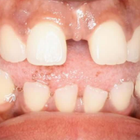

Front view
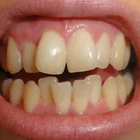
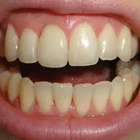
Front view
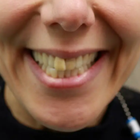

Front view
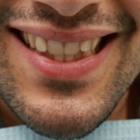
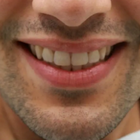
Front view
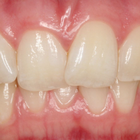

Front view
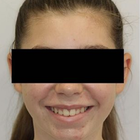
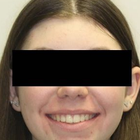
Front view
WHY US?
At Medijump, we're making medical easy. You can search, compare, discuss, and book your medical all in one place. We open the door to the best medical providers worldwide, saving you time and energy along the way, and it's all for FREE, no hidden fees, and no price markups guaranteed. So what are you waiting for?

Free

Best Price

Widest Selection

Risk-Free
What you need to know about Invisalign in Brazil

Also known as Clear-Aligner Treatment. Invisalign is the clear alternative to conventional dental braces used to adjust and straighten teeth, whilst simultaneously improving the patients smile. Through the use of virtually invisible and removable custom-made smooth plastic aligners, dentists are able to place the Invisalign over the teeth allowing for a gradual shift.
Invisalign manufacture the most well known of these clear aligners - the product comprises of a series of computer-generated aligners that are tailor-made to the patient’s teeth. By changing aligners every two to three weeks, the patient’s teeth will gradually move into the correct alignment. The aligners are easy to take off throughout the treatment, allowing the patient to brush and clean their teeth and eat as per normal. Compared to traditional braces, there are no metal brackets and they’re almost invisible to the eye.
This process can help to correct Spacing, Crossbite, Open Bite, Crowding, Excessive Overjet, and Deep Bite.
What is the cost of Invisalign in Brazil?
The pricing for Invisalign within Brazil hinges considerably on several aspects. These comprise the complexity of the patient's condition, the length of the treatment period, and the particular clinic offering the service. In general, the cumulative price remains in line with conventional brace treatment, thus positioning Invisalign as a financially feasible choice for many. Moreover, several dental insurance schemes offer coverage for Invisalign, mitigating the direct costs that the patient incurs.
Additionally, it should be noted that over time, Invisalign may prove to be a financially prudent choice. As it assists in rectifying improperly aligned teeth, it can deter future health complications associated with insufficient oral hygiene such as periodontal ailments or tooth decay, thereby saving you the expense of high-priced future dental treatments. Therefore, making an investment into Invisalign may play a part in promoting sustained dental wellness.
How Long Should I Stay in Brazil for a Invisalign Procedure?
Since this is a non-invasive procedure, you may return to your holiday immediately after you have received your first set of clear aligners. However, strict compliance with your scheduled appointments with your orthodontist is essential. You will be required to see the dentist a few times during your stay so you should be aiming to stay in Brazil for as long as possible, with 2 weeks being the absolute minimum. Subsequent appointments for check-ups and adjustments are typically scheduled every six weeks, but these are relatively quick visits.
What's the Recovery Time for Invisalign Procedures in Brazil?
One of the primary benefits of Invisalign compared to other orthodontic methods is the notably short healing time. Typically, patients go through minimal or no pain during the treatment period. There might be a slight discomfort or pressure sensation in the initial days following the introduction of a new aligner, which is an indication that the aligner is effectively shifting your teeth to their correct position. Such discomfort generally settles after a few days.
It's significant to note that maintaining excellent dental hygiene and following the instructions given by your medical professional can considerably influence the successful recuperation and ultimate outcome of your Invisalign. This might entail properly looking after your aligners and regular dental appointments to track your progress.
What sort of Aftercare is Required for Invisalign Procedures in Brazil?
Your treatment time will also be based on how much your teeth need to be properly aligned. Typically, patients are required to use Invisalign from ten to twenty-four months.
You should avoid hot drinks while wearing the Invisalign since it is made from clear plastic, it can be deformed by hot liquids, any flavored drink, any drink that contains sugar and/or acidic can form cavities and/or stain the Invisalign.
It’s best that you remove your aligners each time you eat, plaque and food particles can get trapped in your aligners. This will lead to the formation of cavities and bad breath, so it is very important that you brush your teeth after every meal.
What's the Success Rate of Invisalign Procedures in Brazil?
Globally, Invisalign demonstrates a substantial level of success, and similarly, in Brazil. Research indicates a large number of individuals experiencing significant enhancements in not only their smile but also their complete dental wellbeing post undergoing Invisalign. This procedure is additionally seen to positively influence self-worth and living standards. Nonetheless, the triumph of Invisalign is majorly dependent on the patient's dedication to adhering to the advised daily 20-22 hours of aligner use and consistently keeping up with scheduled dental visits. Since Invisalign can be removed anytime, your treatment’s success will rely heavily on how frequently you will use clear aligners
What Should You Expect Before and After the Procedure
Before your treatment, you will need to consult your orthodontist first. During your scheduled consultation, you will undergo a series of tests including x-rays, digital scans of your teeth or photographs to determine your diagnosis and plan your treatment procedure. The end-goal is for you to have a healthy bite, your top and bottom teeth must be proportioned properly.
Once all tests have been made, the specialized computer software will be used to design a plan on how your teeth will be moved from their current position to their best position possible. Invisalign is generated using a computer to make aligners especially designed for you and are clear colored. Your aligners will be changed every 2 to 3 weeks, which will allow your teeth to move into alignment. You will also be required to use it for twenty to twenty-two hours a day. Since Invisalign is non-surgical, anesthesia is not a requirement during the whole procedure.
Are there Alternatives to Invisalign Procedures in Brazil?
While Invisalign is a great alternative to straighten your teeth and to have that perfect smile you are aiming for, some people may not be able to afford the treatment. The good news is that there is an alternative to clear aligners, such as Clear Correct - this also makes use of clear plastic aligners to straighten your teeth. The total cost for this type of aligner is usually cheaper than Invisalign. However, Invisalign uses top-notch planning software to determine your treatment plan, making it much easier to attain a successful result.
What are the Potential Risks of Invisalign?
Although Invisalign is typically deemed safe, comparable with most medical procedures, it is not completely devoid of potential complications. Frequently reported challenges entail discomfort, pronounced when transitioning to fresh aligners, and it may transiently influence your verbal communication. Also, there is a susceptibility to dental caries and periodontal disease if appropriate oral care is neglected throughout the procedure. Although infrequent, the effectiveness of Invisalign might not match up to the conventional braces in extremely difficult cases.
Should you get Invisalign or Braces?
Invisalign has become a very popular alternative to metal brackets. Unlike metal braces that stay cemented onto your teeth for a long period of time. Invisalign is a series of detachable clear plastic aligners that guide your teeth into its proper position and alignment. Other advantages of the use of Invisalign are:
- Comfort - since it is made of thin and flexible plastic, it will not irritate the soft tissues in your mouth unlike metal braces and its metal wires.
- Better oral hygiene and Greater Dietary choices - At any stage of the treatment you can remove the aligners to allow yourself to eat and also to Brush your teeth at least twice daily.
- Discreet look - Invisalign is an invisible plastic material that will go unnoticed on your teeth once you use it.
- Teeth-Grinding Protection - it can also function as a nightguard that can protect your teeth from excessive grinding and clenching habits.
One important thing to know is that, although Invisalign is one alternative option to traditional braces, it is not for everyone. A clear aligner is usually used on patients who have moderately crowded teeth or have minor spacing issues on their teeth. Furthermore, because it is custom-built to be a tight fit, it is best used for adults or teens. Patients who have more serious spacing problems and crowded teeth, including patients who have severe overbites, under-bites or cross-bites will require a more intricate treatment.
Invisalign v's Conventional Braces
- Invisalign can be worn with more confidence due to the difficulty in seeing them.
- Invisalign feels more comfortable, with braces irritating and sometimes even chafing the inside of the mouth.
- Invisalign is perfect for athletes, who are able to remove them during sport.
- Braces are semi-permanent, whereas Invisalign can be removed at any time, so fewer trips to the dentist are required when compared to Invisalign.
- Braces are quicker to close gaps or straighten teeth.
- Braces can make some foods difficult to eat, whereas, with Invisalign, they can be removed whilst eating tricky meals.
Whilst the information presented here has been accurately sourced and verified by a medical professional for its accuracy, it is still advised to consult with your doctor before pursuing a medical treatment at one of the listed medical providers
No Time?
Tell us what you're looking for and we'll reachout to the top clinics all at once
Enquire Now

Popular Procedures in Brazil
Prices Start From $1

Prices Start From $1

Prices Start From $1

Prices Start From $48

Prices Start From $1

Prices Start From $1

Prices Start From $1

Prices Start From $11

Prices Start From $1

Recommended Medical Centers in Brazil for Invisalign

- Interpreter services
- Translation service
- Religious facilities
- Medical records transfer
- Medical travel insurance
- Health insurance coordination
- TV in the room
- Safe in the room
- Phone in the room
- Private rooms for patients available

- Interpreter services
- Translation service
- Religious facilities
- Medical records transfer
- Medical travel insurance
- Health insurance coordination
- TV in the room
- Safe in the room
- Phone in the room
- Private rooms for patients available

- Interpreter services
- Translation service
- Religious facilities
- Medical records transfer
- Medical travel insurance
- Health insurance coordination
- TV in the room
- Safe in the room
- Phone in the room
- Private rooms for patients available

- Interpreter services
- Translation service
- Religious facilities
- Medical records transfer
- Medical travel insurance
- Health insurance coordination
- TV in the room
- Safe in the room
- Phone in the room
- Private rooms for patients available

- Interpreter services
- Translation service
- Religious facilities
- Medical records transfer
- Medical travel insurance
- Health insurance coordination
- TV in the room
- Safe in the room
- Phone in the room
- Private rooms for patients available

- Interpreter services
- Translation service
- Religious facilities
- Medical records transfer
- Medical travel insurance
- Health insurance coordination
- TV in the room
- Safe in the room
- Phone in the room
- Private rooms for patients available

- Interpreter services
- Translation service
- Religious facilities
- Medical records transfer
- Medical travel insurance
- Health insurance coordination
- TV in the room
- Safe in the room
- Phone in the room
- Private rooms for patients available

- Interpreter services
- Translation service
- Religious facilities
- Medical records transfer
- Medical travel insurance
- Health insurance coordination
- TV in the room
- Safe in the room
- Phone in the room
- Private rooms for patients available

- Interpreter services
- Translation service
- Religious facilities
- Medical records transfer
- Medical travel insurance
- Health insurance coordination
- TV in the room
- Safe in the room
- Phone in the room
- Private rooms for patients available

- Interpreter services
- Translation service
- Religious facilities
- Medical records transfer
- Medical travel insurance
- Health insurance coordination
- TV in the room
- Safe in the room
- Phone in the room
- Private rooms for patients available
Invisalign in and around Brazil
About Brazil
Occupying the title of the largest country in South America, Brazil embraces a diverse population of over 209 million people. The nation is globally renowned for its passion for football (also referred to as soccer in some parts of the world) and their dynamic, flamboyant carnival traditions, boasting a vibrant mix of music, dance, and colorful attire.
In addition to its vivacious culture, Brazil is a sanctuary of spectacular natural beauty. The country nurtures some of the world's most stunning natural wonders, including the dramatic Iguacu Falls and the world's largest tropical rainforest, the Amazon Rainforest, teeming with diverse plant and animal species. One can't miss the landmark figurine of Christ the Redeemer in Rio de Janeiro that towers 98-feet high, becoming a symbol of Brazil's deep-rooted religious faith and an iconic sight that captures hearts worldwide.
Brazil offers more than 60 JCI-accredited facilities and is one of the leading destinations in the world for cosmetic surgery, with Invisalign procedures being especially popular. Doctors are often Western-trained and speak English on top of Portuguese and Spanish. Local accreditations include the Consortium of Brazilian Accreditation and the Brazilian Hospital Medical Quality Organization (ONA). Popular locations within Brazil include the capital Brasilia, Rio de Janeiro, Sao Paulo, and Curitiba.
Popular Parts of Brazil
- Rio de Janeiro is a combination of natural attractions and metropolis. It is known to be a party city that offers good times and an unforgettable experience. Lounge around in the world-famous beaches of Ipanema and Copacabana, sample Brazilian cuisine, hike the summit of Corcovado and see the high statue of Christ the Redeemer, dance in Rio Carnival, and see the spectacular views of Ipanema and Guanabara Bay from the Sugarloaf Mountain.
- São Paulo is the largest city in Brazil. It is a huge city that at first glance seems intimidating. It offers hundreds of museums, quirky urban art, delicious cuisine, lively nightlife, and intense cultural experience. Visit Avenida Paulista (Paulista Avenue), a street filled with shopping centers, parks, bars, restaurants, museums, theatres, and cultural spaces.
- Salvador is full of vibrant cultures. It is the heart of Brazil’s Afro-Brazilian community. The city’s charm lies in its pastel-colored neighborhood, centuries-old architecture, and freshly-cooked acarajé and completed with wild festivals and capoeira circles every night.
- Brasília is Brazil’s capital. It’s very modern with futuristic architecture that looks more like artworks than ordinary buildings. It’s a paradise for architecture buffs. Besides the architecture, the food and nightlife in this city is something that should not be missed.
- Manaus might be isolated in terms of location, but it’s actually a large city with a prospering industry and a rich culture. The city is also filled with natural beauty; green spaces, waterfalls, and ecological parks surround its colonial buildings. It is the gateway to the Amazon Rainforest.
Weather and Climate in Brazil
As a large country, the weather in Brazil varies from tropical in the north to temperate in the south. A large part of the country lies in the topics. Brazil is a year-round destination because it has a steady average annual temperature. The temperature rarely drops below 20 °C.
Winter in Brazil starts in May and ends in September. The weather remains tropical in the north with an average temperature ranging between 20 °C to 30 °C. In Rio de Janeiro, the temperature varies between 14 °C to 25 °C. However, the evenings usually feel a lot colder.
During this particular season, one can expect a fair amount of rainfall in Rio, leading to many wet and rain-soaked days. If you plan a visit at this time, it's wise to keep that in mind and prepare accordingly. In contrast, further inland, São Paulo experiences significantly cooler temperatures compared to Rio, reflecting the country's vast geographical expanse and diverse microclimates spread across its regions.
This temperature drop might require some warm clothing, especially during late evenings and nights. So, whether you wish to enjoy the rainy murmur in Rio or seek the cool retreat of São Paulo, there's something unique for every traveler in Brazil during this season.
The temperature in Rio rise between November and March, with the highest temperature of around 40 °C but with a thermal sensation of around 50 °C. The Rain rarely lasts long during these months. In the north of Brazil, the rainy season starts in December. March and May see the heaviest rainfall. It’s hot and humid with frequent rain throughout the year in the Amazon.
Getting Around in Brazil
The most popular international airports are Rio de Janeiro–Antonio Carlos Jobim International Airport (popularly known as Galeão International Airport) and São Paulo/Guarulhos–Governador André Franco Montoro International Airport. Both airports serve domestic and international flights to many cities around the globe. The airports mainly serve major airlines but there are budget airlines such as Norwegian Air UK. Tourists can take taxis, bus, train, or car rental from both airports to the city centers.
Brazil is really big, so there will be a lot of long-distance travel to get around the country. The easiest and fastest way to get from one city to another is by domestic flights. The only downside is that the tickets are very expensive. LATAM and GOL Airlines offer multi-trip tickets or air pass. The most economical option is to buy an air pass if you plan to visit a number of different cities.
Buses are popular in Brazil, servicing most areas of the country. The bus system is excellent and provides a comfortable and economical way of travel. Be aware that the distance can be really tiring and overwhelming; some trips can take over 40 hours. The buses are operated by hundreds of different private companies, but the price is standardized. The fare varies from 75 BRL to 240 BRL. There are luxurious buses too.
A good way to get around major cities like São Paulo and Rio is to use Brazil Metro (subway). The fares are around 3.50 BRL to 3.80 BRL. You can purchase rechargeable travel cards. The metro does not operate at night. Be sure to watch your belongings at all times when traveling on the metro.
Taxis run on a metered system, but if you travel a bit further out of town, you need to negotiate the price with the driver. It is best to phone for a taxi or pick one up at a taxi station and make sure to get into a licensed taxi. Ferries and other water travel are important in many parts of Brazil.
Tourist Visas in Brazil
Nationals of 72 countries and territories can enter and stay in Brazil for up to 90 days without a visa. In some cases, an identity document may be accepted instead of a passport. Citizens of other countries, including China and India, must apply for and obtain a visa before entering Brazil. It is recommended to contact the nearest Brazilian embassy or consulate for the most up-to-date visa information.
Brazil offers an electronic visa (e-Visa) for citizens of eligible countries. The e-Visa is valid for two years and allows multiple entries for stays of up to 90 days per year. Applicants can apply for the e-Visa online through the Brazilian government's website.
Additional Information
- Local Currency: The official currency is the Brazilian Real (BRL). 1 USD will get you approximately 5.04 BRL.
- Money & Payments: ATMs are widely available in Brazil and it is the easiest way of getting cash in big cities. ATMs in smaller towns usually don’t work for non-Brazilian cards. Credit cards (Visa and MasterCard) are accepted in numerous shops, restaurants, and hotels. It might be handy to always have cash with you, but always be extremely cautious. Tipping is optional for housekeepers, tip parking assistants 2 BRL, or more since they do not receive wages and depend on tips. Taxis do not expect tips. Restaurants usually include a 10% service charge in the bill.
- Local Language: The official language is Portuguese. English is not widely spoken, especially outside Rio and São Paulo.
- Local Culture and Religion: The largest religion in Brazil is Christianity with more than 60% of the population follows Roman Catholicism.
- Public Holidays: Brazil celebrates major Christian religious holidays as well as Independence Day and Civil Servants Day. Festa Junina, Parintins Folklore Festival, and Oktoberfest are three of the biggest annual festival in the country.
Popular Searches
- Plastic Surgery in Thailand
- Dental Implants in Thailand
- Hair Transplant in Thailand
- Breast Augmentation Thailand
- Gastric Sleeve in Thailand
- Gender Reassignment Surgery in Thailand
- Laser Hair Removal in Bangkok
- Botox in Bangkok
- Dermatology in Bangkok
- Breast Augmentation in Bangkok
- Coolsculpting in Bangkok
- Veneers in Turkey
- Hair Transplant in Turkey
- Rhinoplasty in Turkey
- Stem Cell Therapy in Mexico
- Rhinoplasty in Mexico
- Liposuction in Mexico
- Coolsculpting in Tijuana
- Rhinoplasty in Korea
- Scar Removal in Korea
- Gastric Sleeve in Turkey
- Bone Marrow Transplant in India
- Invisalign in Malaysia
- Plastic Surgery in the Dominican Republic
- Tummy Tuck in the Dominican Republic
- Plastic and Cosmetic Surgery in Poland
- Rhinoplasty in Poland
- Hair Implant in Poland
- Dental Implants in Poland
- IVF in Turkey





